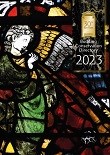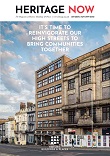Bookshop
This list of recommended publications covers conservation legislation and technology, architectural history and sustainability. If you would like to suggest a publication please get in touch.
Recently added titles |
|
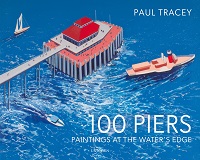 |
100 Piers:
|
 |
Travels in Conservation:
|
 |
Building Construction in Britain: From 600AD to 1890Geoffrey R Sharpe The author’s main objective with his well-illustrated 340-page technical book was to link the relationship between the architectural and vernacular styles of the past with the various craft practices used during 600AD to 1890. An emphasis has been made on the tools and equipment used and how their gradual improvement enabled building practices to develop. The text extends into lighting and ventilation including the advances made in heating, cooking and chimney flue and fireplace design.
|
 |
The Stone Restoration Handbook:
|
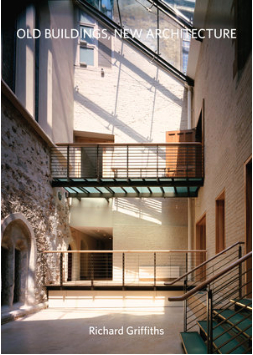 |
Old Buildings, New ArchitectureRichard Griffiths In this book, Richard Griffiths describes the creation of new architecture for old buildings, through the story of his practice and of the projects that he has completed over 25 years. The book is richly illustrated with colour photographs and includes:
and much more. To purchase the book, click here |
 |
Chapels of England: Buildings of Protestant NonconformityChristopher Wakeling This book is the first substantial synoptic account of Nonconformist church architecture in England and aims to provide a history of Nonconformist architecture, using existing buildings wherever possible. It includes examples from the 17th century to the present day, covering all parts of the country and each of the main religious traditions within Nonconformity. Despite the loss of very large numbers of chapels in the past half-century, there are still around 20,000.
|
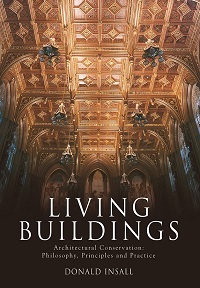 |
Living Buildings - Architectural Conservation, Philosophy, Principles and PracticeDonald Insall This book presents a detailed examination of a painstaking approach to architectural conservation, comprehensively illustrated by case-studies, drawings, plans and in-depth descriptions. It is designed for a wide readership including all those who love and care for old buildings and appreciate good new design in sensitive areas. The book focuses on Donald Insall & Associates with a chronology of the firm's work from its post-war beginnings.
To buy see here |
Books by author, A-Z |
|
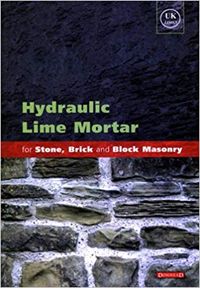 |
Hydraulic Lime MortarGeoffrey Allen This best practice guide to using hydraulic lime mortar is the result of a research project by the UK Limes team which studied the performance application and classification of hydraulic limes for the construction industry. It will prove invaluable for all building practitioners, contractors and tradesmen specifying or handling hydraulic lime on site.
To buy see here |
 |
Measurement and Recording of Historic BuildingsR Ashton, P Swallow and D Watt This book provides a practical guide to measured buildings surveys with a special emphasis on recording the fabric of historic buildings. It will be of interest to all practitioners working in the field of conservation who need accurate surveys of buildings and small sites.
To buy see here |
 |
Conservation of Building and Decorative StoneJ Ashurst and F Dimes A comprehensive reference source for conservation providing theory and practical guidance combining the original two volumes. Volume 1 covers the historical use, geology, performance and deterioration mechanisms of stone as a building material. Volume 2 covers the structural deterioration of stone masonry structures and their repair and conservation, including the use of mortars, consolidants, cleaning methods and other considerations. Chapters on specific issues are written by leading specialists in the relevant field. An invaluable reference source despite the monochrome photographs.
To buy see here |
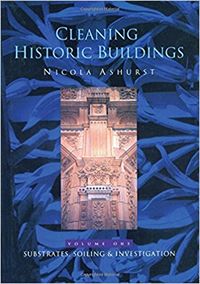 |
Cleaning Historic Buildings Volume 1N Ashurst Volume 1 Substrates, Soiling and Investigations Includes: The methods of assessment and investigation required prior to cleaning; types of soiling including biological, non biological and other staining; the characteristics of masonry substrates and the cleaning of metals and timber.
To buy see here |
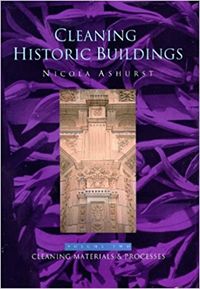 |
Cleaning Historic Buildings Volume 2N Ashurst Volume 2 Cleaning Materials and Processes Includes: Selecting a cleaning method which doesn't damage the fabric of the building, the merits and defects of the methods available, and the key to achieving success in each case. The removal of specific stains such as oil based and metallic stains, bird droppings, organic growths and paint and graffiti. How to select the right contractor. Health and safety and legal requirements.
To buy see here |
 |
The Art of the PlastererGeorge Bankart "The architect George Bankart first wrote The Art of the Plasterer in 1908, it was then re-issued, with amendments, a few years later. This impressive, well illustrated volume offers an artistic interpretation of the way plaster was used in response to stylistic changes. This volume will be of value to craftsmen engaged in plasterwork, conservation professionals and all architects and architectural historians with an interest in this field."
To buy see here |
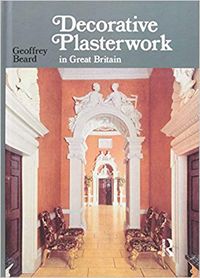 |
Decorative Plasterwork in Great BritainGeoffrey Beard Beard's highly regarded work offers an in depth depiction of decorative plasterwork in Great Britain. Considering issues such as the role of the patron, the materials used, and the techniques employed to create this stunning art form, this beautifully illustrated text is a fundamental resource for anyone interested in the craft.
To buy see here |
 |
Roof Slating and TilingFrank Bennett and Alfred Pinion This is a facsimile of the 1948 edition Bennett and Pinion's classic work, first published in 1935. It provides an invaluable source of information on the various types of roof coverings that were traditionally used such as slates, clay tiles and shingles, and includes basic aspects such as sorting and holing slates through to more complex details such as random, diminishing slating and the tiling of swept and laced valleys.
To buy see here |
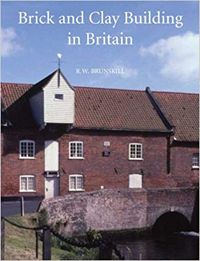 |
Brick and Clay Building in BritainRW Brunskill This new edition includes a fascinating account of how bricks, brick files and terracotta have been made and used from medieval times to the present day, along with an illustrated glossary, a chronological photo survey, appendices, and bibliography.
To buy see here |
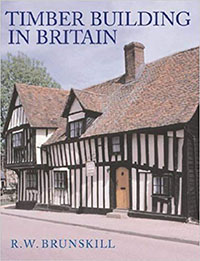 |
Timber Buildings In BritainRW Brunskill Divided into four sections, the first of which deals with cruck construction, box-frame and post-and-truss assembling and the problems of roof construction and concludes with flooring, partitions and the decorative work applied to timber, this work is a vivid history of timber architecture. Part Two comprises an illustrated glossary covering terms used in all types of timber construction work, with the descriptions backed up with excellent drawings and photographs. Part Three, the chronological survey of timber buildings from Saxon times to the 19th century, contains notes on the 47 photographs of building types represented. Finally, Part Four deals with regional variations in timber building and is supplemented by six distribution maps.
To buy see here |
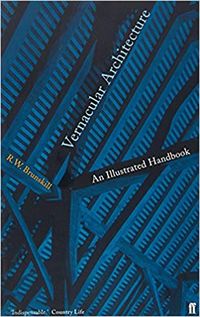 |
Vernacular Architecture, an Illustrated HandbookRW Brunskill A new edition of the classic handbook, fully updated, with 24 pages of additional illustrations and text. Brunskill's Vernacular Architecture is the essential guide to the architecture of manor houses, farmhouses, cottages, barns, stables, mills, inns, shops and early industrial buildings, which were built according to local traditions and close to the domestic scale. As an illustrated record of traditional building techniques it is indispensable
To buy see here |
 |
Treasures on Earth - A good housekeeping guide to churches and their contentsPeter Burman This book explains the techniques and artistry involved in caring for the fabric and contents for churches. It considers the problems of cleaning and repair, and the damage that can be done by over-zealous non-specialists. The contributions to this book are wide-ranging and each chapter is written by a highly regarded specialist in his/her field. In addition to offering guidance on the conservation of stained glass, sculpture, textiles, metalwork, floors, furniture, decorative plasterwork, paintings and so on, the book also covers the technical aspects of creating the right environment with the heating, ventilation and lighting of the building. The advice this volume contains will be essential reading for everyone concerned with the care and upkeep of churches.
To buy see here |
 |
Masonry, Bricklaying and PlasteringRobert Scott Burn Robert Scott Burn wrote this book in 1871 at a time of great developments in science, industry and exploration, and when materials for engineering and building were constantly being improved and replaced. It offers, therefore, an interesting and useful coverage not only of traditional techniques and materials such as stone, brick and pisé. It also examines the developments in the use of cement for wall covering, as well as cement blocks to be used as artificial stone.
To buy see here |
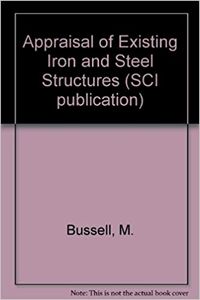 |
Appraisal of existing iron and steel structuresM Bussell Provides guidance on the appraisal, reuse and, where necessary, the strengthening of existing iron and steel structures, concentrating on building structures that were conceived and built before the present era of limit-state design. A historical account of the manufacture of cast and wrought iron and steel and their use in building construction is provided, in order to highlight differences in design, forming, fabrication, and connection methods as compared with present-day practice. Guidance on appraisal strategy is accompanied by reviews of relevant material properties, defects, and methods of investigation of the existing structure. The assessment method offers a three-stage approach to calculations for checking structural adequacy, and also considers adequacy in fire. Load testing is discussed as a complementary method of checking structural adequacy. The final three sections consider methods of structural repair, strengthening and replacement; fire protection; and corrosion protection. Appendices list principal sources of information, provide background details of the assessment of columns to historical standards, and summarise current research on structural cast iron.
To buy see here |
 |
The Elements of StyleStephen Calloway There are a number of beautifully illustrated books on the market which attempt to describe all the details found in houses over the centuries, from skirtings and floorings to light fittings and plaster mouldings. This is one of the most comprehensive, covering interiors and exteriors in Britain and North America, from Tudor to Modern.
To buy see here |
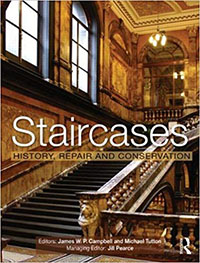 |
StaircasesJames W P Campbell, Michael Tutton This text offers a step-by-step guide to staircases. The work follows a tripartite structure, allowing the text to consider staircases from different levels. Starting with a discussion of the history of staircases, it then escalates into a discussion of current design and engineering of staircases, before focusing on the materials used in staircases and the ways to conserve and maintain them. Ultimately, the text gives a detailed, beautifully illustrated insight into the history, design and maintenance of staircases.
To buy see here |
 |
Decorative Plasterwork in Ireland and Europe: ornament and the early modern interiorChristine Casey, Conor Lucey This volume approaches decorative plasterwork in Ireland and Europe from a broad range of perspectives. The work tackles the techniques used by artisans, the lives of the artisans themselves and the contexts that influenced them. Covering examples throughout Europe from 1550 to the present day, this highly-regarded ambitious text offers a thorough overview of the intriguing art-form.
To buy see here |
 |
Conservation of Timber BuildingsFWB Charles In this authoritative volume, first published in 1984, the author looks at the various types of structure generally associated with the timber-frame tradition. He discusses repair techniques, the procedures of investigation, the preliminary survey and the structural survey, followed up by detailed case studies. The text is supported by numerous line illustrations and photographs.
To buy see here |
 |
The Pattern of English BuildingAlec Clifton-Taylor An invaluable account of the materials used in historic buildings throughout England. The chapter titles illustrate the breadth of its coverage: 1 Introduction; 2 Stone - General; 3 Limestone; 4 Sandstone; 5 Granite; 6 Slate; 7 Marble; 8 Flint; 9 Brick; 10 Tiles; 11 The Unbaked Earths; 12 Wood; 13 Thatch; 14 Plaster and Other Surface Materials; 15 The Metals; 16 Glass (JT)
To buy see here |
 |
Old House Care and RepairJanet Collings This book will help owners, builders and all construction professionals make the decisions that are right for old buildings. It illustrates the long term benefits of using more traditional solutions on older houses rather than modern materials. It also offers practical guidance on: How to get the right professional advice; Legal requirements for listed buildings; Problems with damp and rot; Use of lime mortars, plasters and renders; Why old buildings need to breathe; Planning applications; Trees, outbuildings and gardens"
To buy see here |
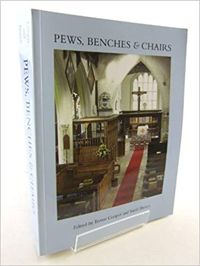 |
Pews, Benches and ChairsTrevor Cooper, Sarah Brown Pews, Benches and Chairs is formed of 30 essays written by leading church historians. Each beautifully illustrated essay offers new thoughts on the history of church seating, modern innovations and what we can expect in the future. This pioneering text is a great resource for church historians, craftsmen, antique dealers and conservators.
To buy see here |
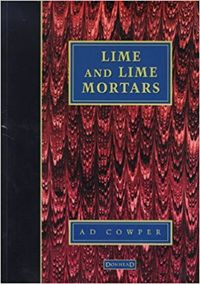 |
Lime and Lime Mortars (reprint of Building Research Station report, 1927)AD Cowper Lime and Lime Mortars was first published in 1927 by the Building Research Station to provide a classification of lime and a 'state-of-the-art' review of its various uses in building construction and repair. The new facsimile edition will be of substantial interest and practical value since the methods, terminology and practices detailed by Cowper are still valid today. The classifications based on Vicat's research, and the suggested specifications in this book offer helpful guidelines for the conservation practitioner.
To buy see here |
 |
Encyclopaedia of Architectural TermsJames Stevens Curl The Encyclopaedia of Architectural Terms, now reprinted as a paperback edition, provides a comprehensive, clearly written, practical guide to the terminology used in the various aspects of architecture and building. It contains over 3,500 terms offering definitions of styles, the components of buildings, materials, the various parts of orders, architectural details, and much more. This scholarly work is illustrated to a high standard and is cross-referenced throughout. It will be an invaluable source of reference for architects, surveyors, architectural historians, and other professionals with an interest in historic buildings.
To buy see here |
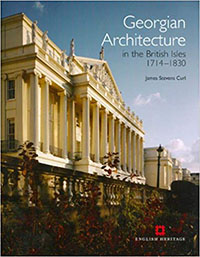 |
Georgian Architecture in the British Isles, 1714-1830James Stevens Curl This text offers a comprehensive guide to buildings constructed on the British Isles from 1714 to 1830. The beautifully illustrated text demonstrates the variety of styles being explored under the reign of the first four Georges, with the British Isles being transformed into a melting pot of Classicism, Rococo, Chinoiserie and Gothick. The work also delves into discussion of the Georgian architect's engagement with emerging concepts such as the Picturesque and the Sublime, as well as with historical conceptual frameworks, which ultimately shaped Georgian architecture.
To buy see here |
 |
The Oxford Dictionary of Architecture: third editionJames Stevens Curl and Susan Wilson The Oxford Dictionary of Architecture offers a comprehensive guide to architectural history. The third edition compiles just under 7,000 entries from Aalto to Zwinger, as well as concise biographies of historical architects. Each entry is followed by a mini-bibliography, and further reading suggestions. The dictionary is a pillar stone for current study and practice within any architecturally related field.
To buy see here |
 |
The Craft of StonemasonryChris Daniels An excellent read, this book is both instructive and informative. The work taps into the beauty and importance of the art of stonemasonry, and offers advice on different practical issues such as how to choose your stone and the best techniques to employ. This is a useful read for anyone interested in the craft.
To buy see here |
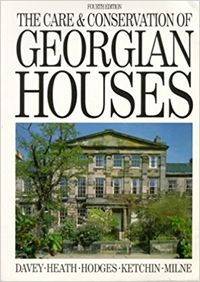 |
The Care and Conservation of Georgian Houses, 4th EditionAndy Davey, Bob Heath, Desmond Hodges, Mandy Ketchin and Roy Milne Now in its fourth fully revised and updated edition, this book fulfils the need for a practical handbook for owners and architects concerned with the maintenance of stone-built eighteenth century buildings.
To buy see here |
 |
The Life of the British Home: an architectural historyEdward Denison, Guang Yu Ren This engaging text tracks the development of the the British home; spanning from the Stone Age to the present day. In an interesting approach to the topic the text both widens it's discussion to consider the exciting cultural/political changes that caused our homes to change, and grounds the discussion by focusing on a new home for each new historical innovation. The author has insured that each home discussed is well known and open to the public, and this well thought-out structure has subsequently made the text a really intriguing and accessible read.
To buy see here |
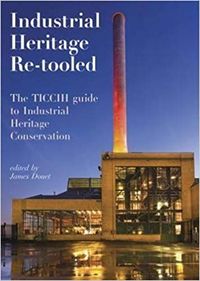 |
Industrial Heritage Re-tooled: the TICCIH guide to industrial heritage conservationJames Douet This text offers the TICCIH's authoritative voice on the issue of conserving global industrial heritage. Comprised of writings from over 30 experts in the field, this is a crucial read for anyone involved in the care of industrial buildings.
To buy see here |
 |
British Theatres and Music HallsJohn Earl British Theatres and Music Halls offers an alternative perspective on theatres as valuable testimonies to the societies that created them. The illustrated text gives a history of theatres and music halls and their transformations, explaining each architectural change's cultural context and long term impact.
To buy see here |
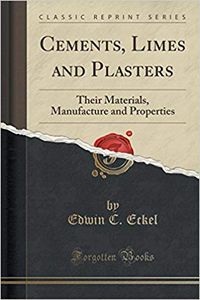 |
Cements, Limes and PlastersEdwin Eckel Edwin Eckel's exceptionally detailed volume, published in 1928, presents a wealth of information drawing on his own research as well as the work of all the eminent international authorities in the field of lime mortars and cements. It captures the fascinating development of building materials from the nineteenth century through the first quarter of the twentieth century. Of particular interest is the way in which it chronicles the demise of hydraulic cement, followed by the brief meteoric rise in popularity of natural cements, then subsequently their rapid eclipse by Portland cement. This book will be an invaluable resource not only to everyone involved in conservation of traditional buildings but also those concerned with the early modern buildings constructed from Portland cement
To buy see here |
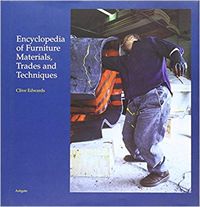 |
The Encyclopedia of Furniture Materials, Trades and TechniquesClive Edwards A unique reference source which is just as valuable for architectural conservators and historians as it is for furniture conservators and historians. Subjects covered by 1700 entries include applied decoration, carving, glass, lacquer, leather, paper, plastics, timber, tools, trades and stone, in Britain and America from the Renaissance to the present day. Clive Edwards is a lecturer in Critical and Historical Studies in Art and Design at Loughborough University.
To buy see here |
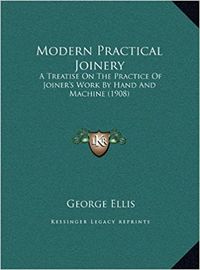 |
Modern Practical Joinery: A Treatise on the Practice of Joiner's Work by Hand and Machine (1908)George Ellis This invaluable reprint of the 1902 practical joinery manual provides a wide variety of turn-of-the-century joinery details and an insight into the techniques used. In addition to common domestic details (sash windows, casements, panelled and boarded doors, skylights, fireplaces, stairs and many others) George Ellis also examines the construction of joinery in shops, banks, museums, libraries and churches. Key features are clearly illustrated in numerous technical drawings. Superb.
To buy see here |
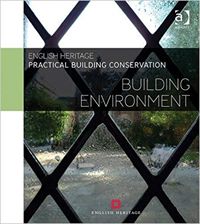 |
English Heritage Practical Building Conservation Series: Building EnvironmentEnglish Heritage Building Environment, looks at the interaction between building materials and systems and their surroundings and how this may lead to deterioration, outlining the evolution of building envelope design and environmental control systems.
To buy see here |
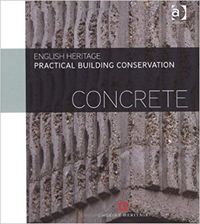 |
English Heritage Practical Building Conservation Series: ConcreteEnglish Heritage Concrete offers broad discussion on three different areas of thought. It begins by running through the historical use of concrete, then tackles common issues with the material and the reasons behind them, before turning its attention to repair and conservation options.
To buy see here |
 |
English Heritage Practical Building Conservation Series: Conservation BasicsEnglish Heritage Conservation Basics gives a brief history of building conservation in the UK, illustrating the context behind the conservation frameworks prevalent today. It then takes a closer look at current issues of conservation, moving from conservation planning to surveying, from assessment to maintenance and repair programmes.
To buy see here |
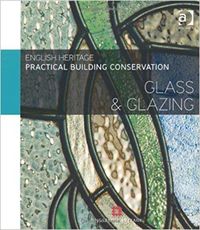 |
English Heritage Practical Building Conservation Series: Glass and GlazingEnglish Heritage Glass and Glazing details the history and development of glass and it's treatment, then uses this understanding to curve the way the text looks at potential conservation methods, their advantages and their pitfalls. Ultimately, the text offers the most promising conservation techniques in 2018, and some valuable tips on how to carry these out.
To buy see here |
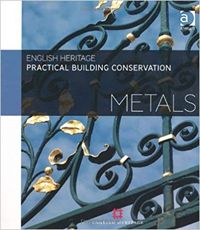 |
English Heritage Practical Building Conservation Series: MetalsEnglish Heritage Metals offer an in depth discussion of a key material in historic buildings, discussing it's historical application, advancement, deterioration as well as the common methods of restoring metals and their long term impacts.
To buy see here |
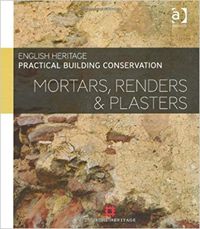 |
English Heritage Practical Building Conservation Series: Mortars, Renders and PlastersEnglish Heritage Mortars, Renders and Plasters covers a wide range of material and acts as a comprehensive guide to the architectural trilogy. The work discusses their historical use, their properties and their deterioration, as well as giving valuable advice on how to assess their condition, and how to repair, conserve and maintain them.
To buy see here |
 |
English Heritage Practical Building Conservation Series: RoofingEnglish Heritage Roofing takes a look at traditional roof coverings used on historic buildings. The text discusses the wide range of materials used in roofs, their development, defects, and solutions.
To buy see here |
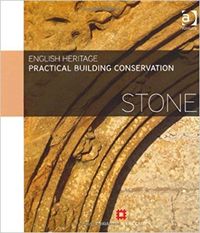 |
English Heritage Practical Building Conservation Series: StoneEnglish Heritage Stone offers broad discussion on three different areas of thought. It begins by running through the historical use of masonry, then tackles common issues with stone and the reasons behind them, before turning its attention to repair and maintenance options.
To buy see here |
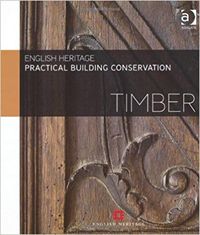 |
English Heritage Practical Building Conservation Series: TimberEnglish Heritage Timber scopes a wide range of subjects, with discussions spanning from its employment as a structural support to its use in joinery. As well as informing the reader on the historical application of timber it also offers valuable information on the material's defects, how to assess these, and how to maintain or even repair timber if necessary.
To buy see here |
 |
London's West End CinemasAllen Eyles with Keith Skone Eyles beautifully illustrated text offers the stories of every cinema in the West End, starting with the first to be built and continuing to present day. Ultimately the book offers an interesting and engaging insight into the history of a district that has managed to maintain it's cultural significance despite a changing cinematographic landscape.
To buy see here |
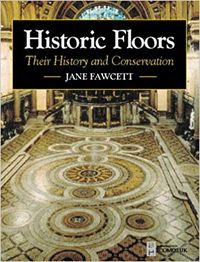 |
Historic Floors, Their History and ConservationJane Fawcett Historic Floors introduces an important and largely neglected subject and considers conservation methods in a European context. It traces the history of some of the great floors of Europe from the 4th Century BC and outlines the development of mosaics, tiles, marble and parquetry floors in secular buildings. The early Christian pavements in basilicas, temples and cathedrals, the creation of medieval tiles, ledger stones and monumental brasses, their destruction by iconoclasts and re-creation during the Gothic Revival, are also discussed.
To buy see here |
 |
Romanesque ArchitectureEric Fernie Eric Fernie's in depth text on Romanesque architecture traces the style from it's origins in the ninth and tenth centuries all the way through to the fourteenth century. The text covers the most significant Romanesque structures in minute detail while grounding the architectural style in its social and political context. This beautifully illustrated text gives a useful insight into the distinctive style.
To buy see here |
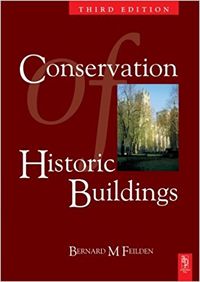 |
Conservation of Historic BuildingsBernard M Fielden Fielden’s work is widely recognised as one of the most influential texts produced on the conservation of historic structures. The third edition of Feilden’s masterpiece offers new, updated material on the original subjects, and introduces new sections on non-destructive investigations and the conservation of modernist architecture.
To buy see here |
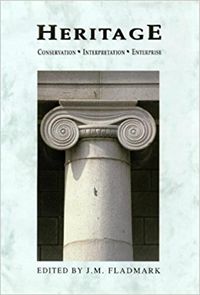 |
HeritageJ M Fladmark This book deals with policy, methods and techniques for the stewardship of land and our cultural assets. The focus is on interpretation and presentation of heritage themes, and the papers will be of interest to those concerned with school and university curricula, those working in museums and galleries, and those in charge of parks and tourist enterprises
To buy see here |
 |
A History of ArchitectureSir Banister Fletcher It is such a remarkable book, containing so much detail and so skilfully illustrated, that it is a must for all architectural and surveying offices at such a reasonable price.
To buy see here |
 |
Materials & Skills for Historic Building ConservationMichael Forsyth Edited by Michael Forsyth, this book provides essential information on the properties of the principal traditional external building materials - stone, brickwork, lime products, concrete, iron and steel, timber, wattle and daub, and glass - and their conservation. Their availability, sourcing and environmental impact is covered, as well as the causes of erosion and decay, and the skills required for their application on conservation projects. With contributions from leading conservation specialists including Gus Astley, Patrick Baty, Charley Brentnall, Michael Bussell, Michael Forsyth, Tony Graham, Chris Harris, David McLaughlin, Brian Ridout, Mike Stock, Geoff Wallis, Ian Williams and Rory Young.
To buy see here |
 |
Structures and Construction in Historic Building ConservationMichael Forsyth "Structures & Construction in Historic Building Conservation" traces the history of structures in various materials and contains guidance on the survey, assessment and diagnosis of structures and the integration of building code requirements within the historic fabric. It discusses conservation engineering philosophy, exposes the conflict between building codes and conservation legislation, and offers solutions. Leading-edge, on-site metric survey techniques are described and a range of structural advice is given, including methods of repair in relation to philosophical principles. Causes of induced movement in historic buildings are explained, together with basic soil mechanics and the assessment and diagnosis of structural failure.It's chapters also cover the conservation of different types of construction: masonry, iron and steel, and concrete and reinforced concrete. It contains fourteen chapters written by the experts present today's key issues in structures and construction for historic building conservation: Bill Blake, Michael Bussell, David Cook, Dina F. D'Ayala, Steve Emery, Michael Forsyth, Ian Hume, and Peter Norris.
To buy see here |
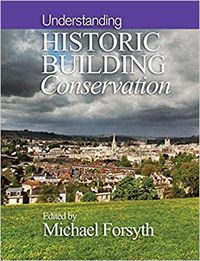 |
Understanding Historic Building ConservationMichael Forsyth Understanding Historic Building Conservation discusses conservation philosophy and the importance of understanding the history of a building before making strategic decisions. It details the role of each conservation team member and sets out the challenges of conservation at planning level in urban, industrial and rural contexts and in the conservation of designed landscapes. The framework of legislation and charters within which these operate is described and the book also provides guidance on writing conservation plans, explains the fundamental issues of costing and contracts for conservation and highlights the importance of maintenance.
To buy see here |
 |
Access to the Historic Environment: meeting the needs of disabled peopleLisa Foster Access for disabled people in historic settings is more than just a temporary ramp over the front steps for a wheelchair user. It is commitment to create integrated use and enjoyment of cultural and civic historic monuments for everyone, including people with mobility or sensory impairments, older people, parents with small children, or those temporarily disabled as a result of illness or injury. This book examines flexible and pragmatic solutions to improve circulation in buildings by overcoming level changes, addition of handrails and other facilities which achieve the basic goal of dignified access, and which protect a building's special architectural character. It features practical guidelines and illustrated case study material, with examples of how to improve access in different types of historic buildings including Georgian, and neo-classical buildings, historic monuments, country houses, gardens and landscapes.
To buy see here |
 |
The Conservation Movement: a history of architectural preservation, antiquity to modernityMiles Glendinning Glendinning's work traces the development of the 'Conservation Movement', it's entangled relationship with modern politics, and the changing ideologies behind the movement. Ultimately, is asks the question whether the current stability of the architectural Conservation Movement will last.
To buy see here |
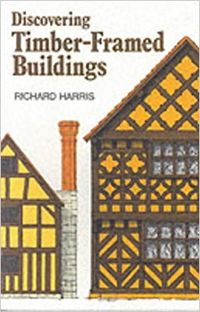 |
Discovering Timber Framed BuildingsRichard Harris A concise but invaluable introduction to historic timber framed buildings and their details in England by one of the leading authorities. Well illustrated with black-and-white photos and line drawings.
To buy see here |
 |
Heritage Interpretation: Theory and Practice (Issues in Heritage Management)Alison Hems & Marion Blockley (Editors) This established volume compiles writings from leading experts in heritage management in a push to create a defining guide to interpreting heritage. Working through a series of interesting example, the text offers different ways that the sites can be interpreted, practical guidance on how to do so, and the philosophies defining these decisions. This clear and easy guide is a valuable addition to the reading list of any student of history or heritage studies.
To buy see here |
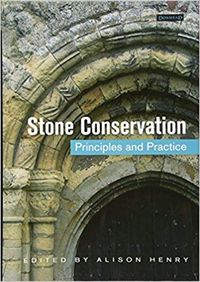 |
Stone Conservation: Principles and PracticeAlison Henry The conservation of stone buildings and monuments requires not only a good understanding of the essential repair techniques, but an ability to diagnose problems and to identify the appropriate remedial action that may be required. This important and timely publication brings together contributions from leading stone conservation practitioners. It discusses the philosophical principles on which stone conservation is founded and the need to understand the full history and development of a building before starting work. Other topics covered include consolidation, cleaning, and the replacement of stone; conservation of different stone types, including limestone, sandstone, and marble; problems of dealing with polychrome stone; and finally, issues relating to church monuments and graveyards, taking account of the need for good maintenance and health and safety requirements. The book is illustrated with the authors' own examples of stone conservation in practice. Architects, surveyors and craftsmen involved in the conservation of stone structures will find this both a practical and useful reference work
To buy see here |
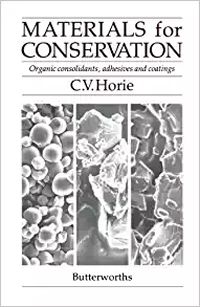 |
Materials for ConservationCV Horie The definitive introduction to the properties of materials used in conservation. It explains clearly the potential and pitfalls of any proposed technique, providing a convenient summary of necessary information.
To buy see here |
 |
John Fowler: The Invention of the Country-House StyleHelen Hughes The eminent interior designer, John Fowler, was responsible for transforming some of Britain's most important historic interiors. The 'Fowler style' was tacitly accepted as the correct style for the decoration of a period interior, despite the fact that this appearance of understated elegance and comfort was in fact entirely an American invention. This fascinating and controversial review of Fowler's work, containing full colour illustrations, offers an important discussion of the treatment of historic interiors and highlights his concern to create visually successful rooms rather than to merely replicate earlier interiors. The impact Fowler had on his contemporaries was immense and long-lasting, so much so that today the 'Fowler style' has come to be considered by some as the only style for the decoration of a country house.
To buy see here |
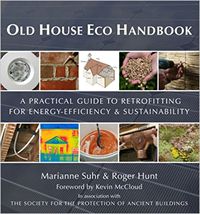 |
Old House Eco HandbookRoger Hunt and Marianne Suhr Practical guidance from two leading SPAB conservation specialists on making historic houses energy-efficient and low carbon, without devaluing future sustainability or character
To buy see here |
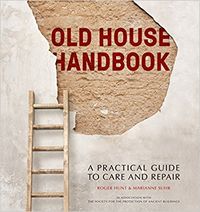 |
Old House Handbook: A Practical Guide to Care and RepairRoger Hunt & Marianne Suhr An authoritative guide to the maintenance and repair of old houses, whether it's a medieval cottage or an Edwardian terrace. Reflecting the principles of the Society for the Protection of Ancient Buildings, the book's approach is one of respect, restraint and repair rather than 'restoration' which can so easily destroy the rich historical legacy of any old building. Providing practical guidance on everything from breathability and damp to structural movement, this is the essential reading for anyone with an old house.
To buy see here |
 |
Development of English Building ConstructionC F Innocent This study of English traditional buildings by C.F. Innocent was first published in 1916, and provides an account of the materials and techniques used in the construction of vernacular buildings from earliest times through to the 19th century. The first part of the text describes the transition from primitve forms of building through to developed timber buildings. This is followed by chapters covering the chief elements of the building structure - walls, floors, roofs, doors, windows and chimneys. It includes a chapter on thatching which examines the types of thatch used and the different ways of laying and securing it; this is still considered by many to be the best account of the subject.
To buy see here |
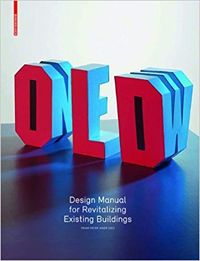 |
Old and New: design manual for revitalising existing buildingsFrank Peter Jäger Illustrated with technical drawings, photos and examples, Jäger's text offers guidance on how to add modern innovations to old buildings. The work walks through 32 examples of renovated historic buildings, broaching a series of challenges that rise from such projects.
To buy see here |
 |
Building Scotland: The Traditional Building Materials of ScotlandMoses Jenkins Scotland's traditionally built environment is one of its most unique and cherished features. This book celebrates the raw materials which have been employed in forming Scotland's traditional buildings. It examines 14 different materials, including stone, timber, iron, clay and slate.
To buy see here |
 |
Origins of Classical ArchitectureMark Wilson Jones Jones traces the origins of the Doric, Ionic and Corinthian styles in this subversive text. Controversially, Jones argues that rather than being the results of long periods of architectural development, each style emerged suddenly out of periods of societal revolution or religious evolution. Ultimately, the original text finds new ways of exploring orders which have been questioned and rethought by western cultures since their conception.
To buy see here |
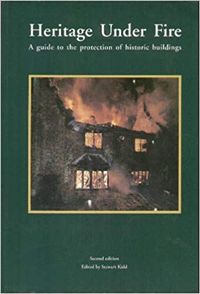 |
Heritage under Fire: A guide to the protection of historic buildingsStewart Kidd Concise advice illustrated by case studies designed to help owners and occupiers of historic buildings implement a set of procedures which will reduce the possibility of fire breaking out and, in the event of a fire, ameliorating the impact on a building and its content.
To buy see here |
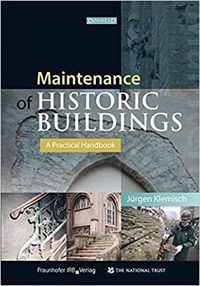 |
Maintenance of Historic Buildings: a practical handbookJurgen Klemisch This helpful text compiles essential guidance on how to maintain a historic building, which could save significant costs later in the building's life. Providing checklists, spreadsheets and detailed information on a range of methods, this tightly structured and easy to follow handbook can be incredibly instructive for property owners, building managers and conservation advisors.
To buy see here |
 |
The Scottish Country HouseJames Knox This fascinating text offers an intriguing insight into a group of Scottish houses and castles that have remained in the hands of their original families. Knox weaves a vibrant tapestry of stories of eccentric owners, curious heirlooms and beautiful story-telling buildings. Rich with entertaining narratives of how Scotland's oldest families live, this is a fantastic book for anyone interested in Scottish history, eccentricity and aesthetic.
To buy see here |
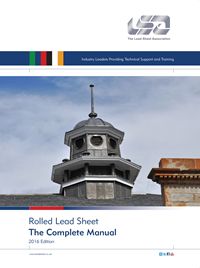 |
Rolled Lead Sheet - The Complete ManualLead Sheet Association The Rolled Lead Sheet Manual (2016 edition) is the essential reference point for leadworkers, architects and specifiers using rolled lead sheet to BS EN 12588: 2006. Endorsing the current BS6915 Code of Practice, the Lead Sheet Manual provides comprehensive technical information, detailed drawings and photographs, sizing charts and illustrations in colour showing the use of rolled lead sheet in construction.
To buy see here |
 |
Scotland's ShopsLindsay Lennie The publication celebrates the history of Scotland's retail architecture in a timeline from medieval markets to the post-war period. It explores, for the first time, how shops in Scotland evolved. It takes a chronological look at shop development and closely examines different types of shops and their architectural elements and materials. Shops are featured from all around Scotland from Lerwick to Stranraer.
To buy see here |
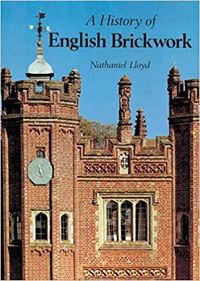 |
A History of English BrickworkNathaniel Lloyd If you are looking for a text that lends practical advice on the restoration of old buildings, or for an engaging history of English brickwork, this text has you covered. Lloyd’s well established work on English brick and brickwork offers an excellent photographic record and covers a wide range of issues; spanning from an explanation of the practical problems of shaping brick, through to the process of dating brickwork.
To buy see here |
 |
Brickwork - History, Technology and Practice: Volume 1Gerard Lynch Volume 1 begins with a background to the historic development of the brick, the craft of bricklaying and of brickwork from the 13 century to the present day. It then goes on to describe the modern manufacture of bricks along with their properties and classification. The book also includes chapter on mortars, tools and accessories along with an explanation of bricklaying skills and comprehensive coverage of the techniques of bonding and its application.
To buy see here
|
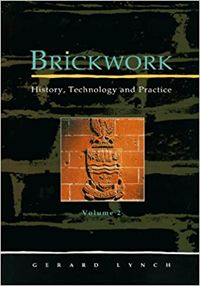 |
Brickwork - History, Technology and Practice: Volume 2Gerard Lynch Volume 2 examines the elements of building construction in brick. Chapter one studies the setting out of a small building and then progresses to foundations, examining the historical as well as current practices. The following five chapters cover both the contemporary and traditional aspects of substructure brickwork; basements; sleeper walls; damp proof courses; cavity walling and jointing and pointing. The volume concludes with useful advice on achieving controlled and efficient bricklaying.
To buy see here |
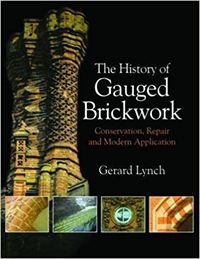 |
The History of Gauged BrickworkGerard Lynch This book takes a look at the history and use of cut, rubbed and gauged brickwork; the use of tools and equipment and the differences between historic and contemporary bricks with a view to inform conservation and restoration decisions. The book uses case studies from England, Ireland and the US to illustrate the use of different materials and techniques on buildings ranging in age. Written by Dr. Gerard Lynch, a leading authority in this subject area, this book will be of particular interest to architectural historians, architects working on historic buildings and building conservators.
To buy see here
|
 |
Conservation of Modern ArchitectureSusan Macdonald, Kyle Normandin and Bob Kindred This book examines many of the philosophical and practical issues surrounding the conservation of modern buildings and also the problems faced by building practitioners in dealing with buildings constructed in a wider range of styles and materials than at any other time. Climate change in particular has forced change in the way in which we think about buildings, with the pressures to address issues of energy efficiency becoming more urgent and likely to have consequences that may alter the perceived architectural and historic interest of modern and traditional buildings alike.
To buy see here |
 |
Plastering, Plain and DecorativeWilliam Millar The first edition of this important book was originally published in 1897, but it is still viewed by most traditional plasterers as the plastering 'bible'. Now available in this facsimile edition this impressive volume presents a comprehensive coverage of traditional plasterwork, including everything from plain lime plastering through to hand modelling and cast plasterwork. Written by William Millar, who had practical first hand experience of using these methods, the book provides a fascinating and unique record of a craftsman's intimate knowledge of these traditional materials and techniques. This, the only detailed work currently available on this subject contains: a vital record of craft skills being practised 100 years ago; fully illustrated examples of decorative ceilings and other features; and in depth instructions for making casts and moulds.
To buy see here |
 |
Roof Construction and RepairE Molloy This text offers a practical guide to roof construction and maintenance. Written during the Second World War by a roofer, the texts details the contemporary approach to laying and repairing roofs. The text offers useful advice on designs and techniques that we are still using today, and demonstrates the extent to which current practice is rooted in tradition. .
To buy see here |
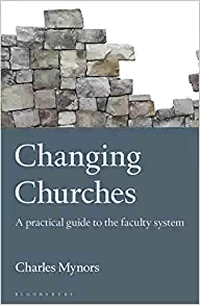 |
Changing Churches: A practical guide to the faculty systemCharles Mynors This book de-mystifies the whole process of carrying out works to churches. It explains what consents are needed; how they can be applied for; and on what basis applications are decided. The author explores many of the detailed issues that may arise in practice whether the proposal is to move a shelf in the vestry or to embark on a major refurbishment of the whole church.
To buy see here |
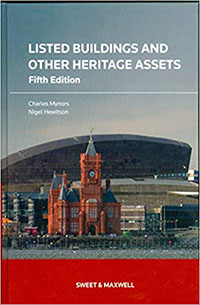 |
Listed Buildings and Other Heritage AssetsCharles Mynors and Nigel Hewitson The standard reference work for lawyers, planners and all others working in this area on the law concerning protection of historic buildings, conservation areas and monuments in the UK. Explains how the built heritage is protected, how planning controls apply, powers to bring about repairs, acquisition of historic buildings by public authorities, and the consequences of carrying out works without consent.
To buy see here |
 |
Oak-Framed BuildingsRupert Newman This practical book offers a step-by-step guide to the techniques of timber-frame construction. The text walks through projects by the author and other carpenters, and explains each stage of construction with the help of photographs, drawings and in-depth descriptions. A great resource for carpenters, builders and aspiring self-builders.
To buy see here |
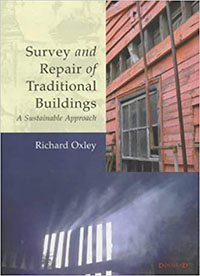 |
Survey and Repair of Traditional BuildingsRichard Oxley This book helps practitioners identify the particular issues relating to older buildings and the problems they may encounter when surveying and repairing them. With the use of examples, the author provides invaluable information on how traditional buildings perform, emphasizing the need for a sensitive and sustainable approach which also takes account of the specific needs of the building. The book examines all aspects to be included in any assessment for survey and repair, and points out in detail the potential pitfalls. It also explores the controversial issues surrounding the treatment of damp and timber decay, advocating solutions that are appropriate to older buildings rather than using standard, often damaging, methods of treatment
To buy see here |
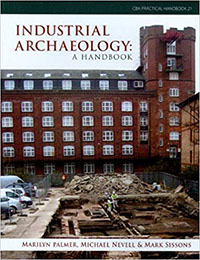 |
Industrial Archaeology: a handbookMarilyn Palmer, Michael Nevell and Mark Sissons The text offers an accessible introduction to the UK's industrial heritage. The guide walks through Britain's industrial history, the story behind the rise and fall of specific industries, and the industrial architecture and sites we've that exist today. Finally it tackles the issues surrounding what we do with these sites today.
To buy see here |
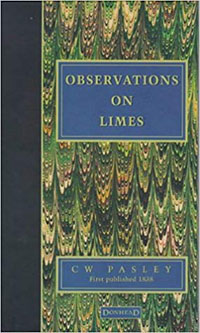 |
Observations on LimesC W Pasley This volume represents a small part of the book Sir Charles Pasley wrote in 1838 which detailed his own experiments in the development of artificial cement for military uses. Whilst much of the first part of Pasley's work is of limited use to those involved with the care of historic buildings today, the section that Donhead has chosen to reprint provides a fascinating insight into the developments using lime during the eighteenth and early nineteenth centuries. Michael Wingate's excellent introduction to this edition offers a helpful present day perspective of the work undertaken on lime in that period, and shows how relevant such research is to conservation practitioners and others currently specifying or directly working with lime.
To buy see here |
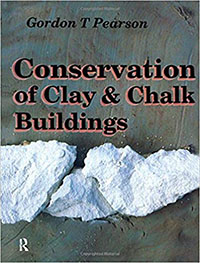 |
Conservation of Clay and Chalk BuildingsGordon Pearson This standard work provides practical guidance on appropriate methods of conservation and repair of earth buildings using traditional materials. It is the first major book on the subject of earth buildings since Clough Williams-Ellis and the Eastwick-Fields published Building in Cob, Pise and Stabilised Earth in 1947. It deals with the qualities and characteristics of clay and chalk and the way in which they have been used to construct buildings. Advice is given on soil analysis, the philosophy of repair techniques and the factors to be considered before altering, converting or extending an earth building. The author primarily advocates repair techniques using traditional materials but the role and suitability of certain modern materials is also considered.
To buy see here |
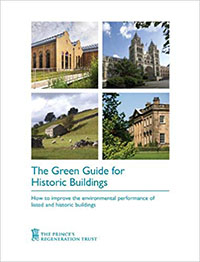 |
The Green Guide for Historic Buildings: how to improve the environmental performance of listed and historic buildingsThe Prince's Regeneration Trust This helpful handbook gives valuable advice on how to adapt historic buildings to make them more environmentally friendly. The text gives a step-by-step guide to issues such as how to save energy, how to generate it from renewable sources, how to maintain the essence of a building while renovating as well as where to find suppliers, funding and permission. This simple, easily accessible and well structured text is a great asset for anyone involved in the maintenance and adaption of a historic building.
To buy see here |
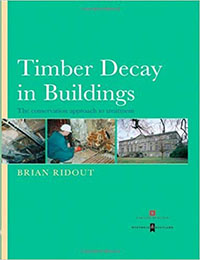 |
Timber Decay in Buildings: The Conservation Approach to TreatmentBrian Ridout and John Fidler A holistic view of timber decay in buildings and its treatment.Section 1 discusses timber as a living material, Section 2 deals with decay organisms and their habitat requirements. Section 3 moves on to the building as an environment for timber and discusses the ways in which wood responds to moisture change. Section 4 ends with an approach to timber decay which integrates knowledge on the decay organism, its requirements and natural predators with appropriate and targeted chemical treatments.
To buy see here |
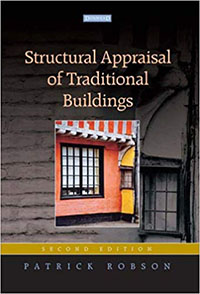 |
Structural Appraisal of Traditional BuildingsPatrick Robson This book is a comprehensive guide to the common causes of structural damage. It examines the techniques for collecting evidence including desk study, visual inspection, distortion survey, testing and ground investigation as well as offering advice on managing liability. Each appraisal is unique. A wide range of investigative techniques are described covering most of the circumstances that are likely to occur in practice. The second edition has been substantially re-written and includes new material on structural behaviour; initial appraisal; building types; use of iron in buildings; and the problems that occur with buildings built on clay
To buy see here |
 |
Conservation and Sustainability in Historic CitiesDennis Rodwell Conservation and Sustainability in Historic Cities examines how the two key issues of urban conservation and sustainability relate to each other in the context of historic cities, and how they can be brought together in a common philosophy and practice that is mutually supportive. It sets out the theoretical and practical background to architectural conservation and how its perceived relevance and level of attainment can be extended when harnessed to wider agendas of sustainability and cultural identity. It tests the achievement of urban conservation through examples from across Europe and further afield and relates them to the sustainability agenda.
To buy see here |
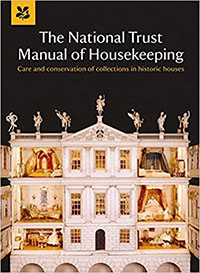 |
The National Trust Manual of HousekeepingH Sandwith, and S Stainton This guide to care and conservation is written from the perspective of The National Trust and is particularly useful for its advice on the protection of interior finishes, fittings and furnishings.
To buy see here |
 |
Saving Churches, The Friends of Friendless Churches: the first 50 yearsMatthew Saunders, Frances Lincoln Saunders' work offers an insight into the work of The Friends of Friendless Churches. The organisation is dedicated to maintaining architecturally significant places of worship, and now owns 38 former churches. The text works through all 38 buildings, giving a beautifully illustrated account of their history and significance, as well as providing information on the organisation itself.
To buy see here |
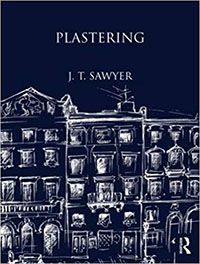 |
PlasteringJT Sawyer Sawyer's seminal work was first published in 1951. It offers straightforward practical instruction on the tried and tested methods of plastering as it was practised in the traditional way before the Second World War. It includes very useful drawings of the different features, including the tools, running moulds and geometry for setting out. The chapter describing running mouldings in situ will be of particular interest to the conservation practitioner since this method is now rarely used, but is considered the correct way to repair historic plasterwork.
To buy see here |
 |
The Weathering of Natural Building StonesRJ Schaffer This important study, first published in 1932, provides a general account of the factors which cause decay of building stones and a summary of the best methods to reduce the incidence of decay. The book discusses weathering associated with natural defects inherent in stone. It then examines issues of weathering caused by bad workmanship or errors in the selection of material. Decay through chemical and natural physical phenomena are discussed in detail. The final sections offer useful advice on how to prevent long term decay through appropriate repair, replacement and cleaning of stone
To buy see here |
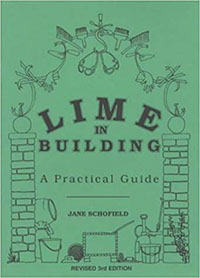 |
Lime in BuildingJane Schofield A short introduction to the use of non-hydraulic lime mortars, renders and washes, well illustrated with line drawings.
To buy see here |
 |
Architectural Conservation: Issues and DevelopmentsVincent Shacklock This authoritative book offers contributions from leading practitioners and scholars presenting an assessment of the current state of conservation in the UK. In addition to tracing the developments in conservation over the past fifty years it raises concerns about the ambivalence within government towards heritage protection. It considers the need for a clear understanding of the value of architectural heritage; the importance of training; adequate funding for maintenance, and support at a local and community level. It also discusses the role of the amenity societies and provides a useful comparison of the national and regulation driven process operating in the UK with the US local and incentive driven approach
To buy see here |
 |
Stone Decay: Its Causes and ControlsB.J. Smith and A.V. Turkington This volume offers valuable insights into the nature of decay processes and the factors that control them. It presents several studies on the impact of pollution on stonework in urban environments. Important methodological contributions are also included which cover a number of key issues: the mapping of façades to explain rates of decay associated with conservation actions; the laboratory simulation of corrosion in polluted atmospheres; also the quantification of colour change through a study of the artificial ageing of building stone. The effectiveness of stone treatments within the laboratory is also considered in detail.
To buy see here |
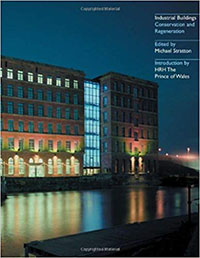 |
Industrial Buildings: Conservation and RegenerationMichael Stratton Drawing closely on the work of Regeneration through Heritage (a Business in the Community initiative), this compilation explores urban regeneration initiatives and policies in Britain and examines the potential of industrial buildings for conservation and re-use. Contributors include Nick Falk, Rick Ball, Fred Taggart, Bennie Gray, Bo Ohrstrom, Phillip Tidd, John Worthington and Sue Taylor as well as Michael Stratton.
To buy see here |
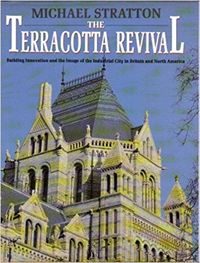 |
The Terracotta RevivalMichael Stratton Terracotta and faience (glazed terracotta) became of considerable significance in the development of the American Scyscraper after the Chicago fire of 1871 and subsequently in the architecture of Victorian and Edwardian city centres throughout Britain, not least for the ornamentation which was frequently lavished upon it. This book details the historic development and use of the material and is very well illustrated. Although only the last chapter deals with conservation issues, the book is essential reading for anyone involved with the conservation of terracotta buildings.
To buy see here |
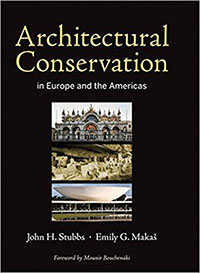 |
Architectural Conservation in Europe and the AmericasJohn H Stubbs, Emily G Makas Architectural Conservation in Europe and the Americas acts as a comparative guide to conservation of cultural heritage throughout Europe and the Americas. The text analyses the similarities and differences between different countries approaches to the topic, and offers contextual explanations for these differences. Overall, the text offers a brilliant overview of western conservation practice, making it an essential read.
To buy see here |
 |
Men from the Ministry: how Britain saved its heritageSimon Thurley Men from the Ministry explores the British state's amassment of buildings, monuments and sites in the first half of the twentieth century. This thought provoking text places the movement in it's historical and social context, discussing the state of trauma and turmoil the UK was in between the two great wars, and the nation's need for a cultural protectionism movement. This text is a really interesting well-written read and well-worth some of your time.
To buy see here |
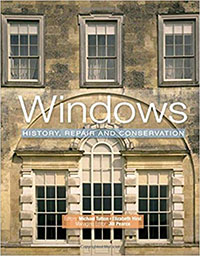 |
Windows: History Repair and ConservationMichael Tutton and Elizabeth Hirst Windows: History, Repair and Conservation has been long listed for the RIBA International Book Awards 2008 in both the Sir Robert McAlpine International Book Award for Construction and the Sir Nikolaus Pevsner International Book Award for Architecture categories
To buy see here |
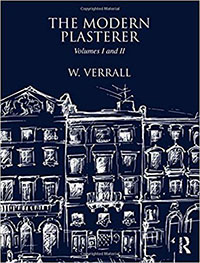 |
The Modern PlastererW Verrall Verrall's book starts at a basic level then progresses to more complex work and provides copious drawings and diagrams to illustrate the material. He presents detailed information on the characteristics of different plaster and their uses, the varieties of lathing available and how to apply and finish flat lime plaster. It also explains how to set up and run different types of mouldings, the casting of mouldings and uses of fibrous plaster.
To buy see here |
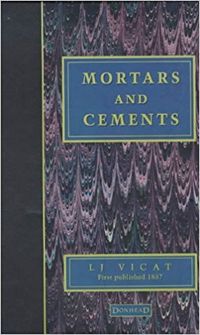 |
Mortars and Cements (facsimile of 1837 edition)LJ Vicat L J Vicat's investigations into the nature and use of limes first appeared in this English language edition in 1837. It is of immense interest and importance as it critically reviews the practices of time sifting the good ones from the bad by careful experiment. The classification which he prepared is still valid today and enables the best possible use to be made of any lime, particularly for hydraulic works. Contents: Limestones, calcination of limestone, hydraulic limes, slaking of limes, expansion of limes, hydrate of lime, sands and their qualities, pozzolanas, mortars or cements intended for immersion, exposed to the weather, or subjected to constant damp soil, natural cements, ancient mortars other theories of calcareous mortars and cements.
To buy see here
|
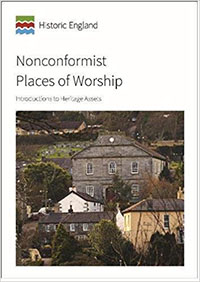 |
Nonconformist places of worshipChristopher Wakeling A short guide from one of the leading authorities on the topic to the historic development of chapels and meeting houses in England and their future.
To buy see here
|
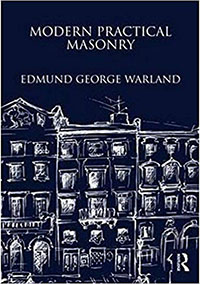 |
Modern Practical MasonryEdmund George Warland One of the classic works in the field of stone masonry, E G Warland's book, which was first published in 1929, remains an essential reference for stone masons and conservation practitioners working with historic buildings. It provides a clear and simple guide to the subject, based on meticulous and beautiful drawings. Organized in three section, it includes chapters on construction details; methods of working particular structural shapes; both basic and advanced geometry and setting out. It also includes forms and tables omitted from later editions to be used as templates for costing and estimating work. These are as relevant today as they were in the 1920s. With a new introduction by Christopher Weeks.
To buy see here
|
 |
Building Pathology: Principles and PracticeD Watt Building Pathology provides an interdisciplinary approach to the study of building defects and the appropriate remedial action. It considers how a building's structure and its materials relate to its environment, its occupants and the way the building is used, so as to develop a better understanding of building failures.
To buy see here |
 |
Conservation of Historic Buildings and their ContentsD Watt and Belinda Colston The conference entitled 'Where Conservation Meets Conservation', held at De Montfort University, Leicester on 9 September 2002 provided the opportunity to explore the interface between historic buildings and their contents by recognizing the interrelationships between architectural and object conservation. Within this, consideration was given to the role of conservation science and technology in achieving appropriate and sustainable solutions. The emphasis of the conference was on raising awareness at a practical interdisciplinary level and providing a platform for sharing knowledge and experience.
To buy see here |
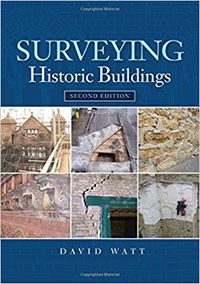 |
Surveying Historic BuildingsD Watt This book focuses on the unique nature of the principles involved in surveying historic buildings. It offers a well structured guide to inspecting and reporting on the condition of older buildings, and takes into consideration the traditional materials and techniques used in their construction. Part I summarises the basics of surveying practice, including the inspection, assessment, defect diagnosis and monitoring of defects. Part II examines the building elements, discussing the form of construction and their symptoms and diagnosis. This section features concise inspection checklists for ease of reference.
To buy see here |
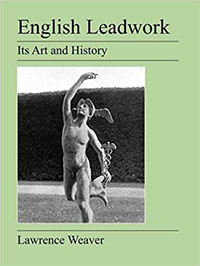 |
English LeadworkLawrence Weaver Lawrence Weaver's design reference work appeared in 1909, and is now available from Donhead in this re-printed facsimile edition. It describes and documents many examples of decorative leadwork, which being durable and attractive lends itself in its simplicity to a multitude of forms. Whilst examining in detail the history and workmanship to be found on fonts, statues, urns and vases, the book also includes more modest structures such as pipes, pipeheads and rain-water cisterns. The author also explores the use of lead in roofing, particularly for spires, steeples and domes, and points out that it is one of the most efficient of roofing materials, giving many excellent examples of its use on Sir Christopher Wren's churches in London.
To buy see here |
 |
Building in Cob, Pise and Stabilized EarthClough Williams-Ellis This fascinating study, first published in 1919 then substantially revised in 1947, was based on experiments undertaken by the author, Clough Williams-Ellis into the use of pisé de terre and other earth based materials. It was written at a time when traditional building resources such as brick and timber were in short supply, and there was a need to consider the potential for using alternative materials in construction. Whilst earth building has not developed significantly in the UK since this book appeared, the recent efforts of the sustainable architecture movement has helped to stimulate an interest in constructing new earthen buildings. This, coupled with an increasing awareness of the importance of conserving and maintaining our existing stock of earth structures, will ensure this work will be of considerable value not just as a historical document but as a practical source of advice and guidance
To buy see here |
 |
British Interior House Styles: an easy reference guideTrevor Yorke This concise guide tracks the development of British interiors over the centuries. The work considers both the change in attitude towards interior spaces, and the progression of British fashion, decor, and furniture. Beautifully illustrated and easy to follow, the text is a useful guide for anyone interested in British interiors.
To buy see here |
 |
Victorian Gothic House StylesTrevor Yorke This text examines the Victorian reinvention of the Medieval architectural style. Beautifully illustrated, the text offers a comprehensive guide on the most significant buildings of this period and how to recognise the style.
To buy see here |
 |
BS EN 1996-2:2006 Eurocode 6. Design of masonry structuresEurocode 6 supersedes BS 5390 Codes of Practice for Stone Masonry and includes several standards and national annexes. BS EN 1996-1-2:2005 provides general rules on structural fire design; BS EN 1996-2:2006 covers design considerations, selection of materials and execution of masonry; and BS EN 1996-3:2006 provides simplified calculation methods for unreinforced masonry structures.
To buy see here
|
 |
BS EN 62305-1:2011 Protection against lightning. General principlesBS EN 62305 Protection against lightning is in four parts: BS EN 62305-1:2011 General principles; BS EN 62305-2:2012 Risk management; BS EN 62305-3:2011 Physical damage to structures and life hazard; and BS EN 62305-4:2011 Electrical and electronic systems within structures
To buy see here
|
 |
BS 5534:2014+A2:2018 Slating and tiling for pitched roofs and vertical cladding. Code of practiceBS5534 sets out good practice in roof slating and tiling, and covers a wide variety of traditional materials. However, BSI warns that its recommendations 'may not be appropriate for the re-slating or re-tiling of someold roofs, particularly where traditional and/or reclaimed materials are used. Users intending to adopt any of these recommendations for old roofs, and especially for historically or architecturally important buildings, are advised to consult with the local planning authority or an appropriate conservation organization to check their suitability.'
To buy see here |
 |
BS 7671:2018 Requirements for Electrical Installations. IET Wiring RegulationsBS 7617 Wiring Regulations is the UK’s main electrical safety standard. It sets out requirements that detail how to perform electrical installations safely
To buy see here |
 |
BS 7913:2013, Guide to the conservation of historic buildingsBSI's text on the conservation of historic buildings offers thorough guidance on all the stages of managing and treating historic structures. This is a great text to go to for general advice as well as suggestions for further reading.
To buy see here |
 |
BS 8221-1:2012 Code of practice for cleaning and surface repair of buildings. Cleaning of natural stone, brick, terracotta and concreteProvides guidance on the characteristics of surface deposits and the principal cleaning methods in use for the removal or partial removal of deposits from the original surface or substrate of a building. Materials covered include natural stones, brick, glazed and unglazed terracotta/faience, and cast concrete and concrete products such as cast stone. The standard supersedes BS 8221-1:2000
To buy see here
|




